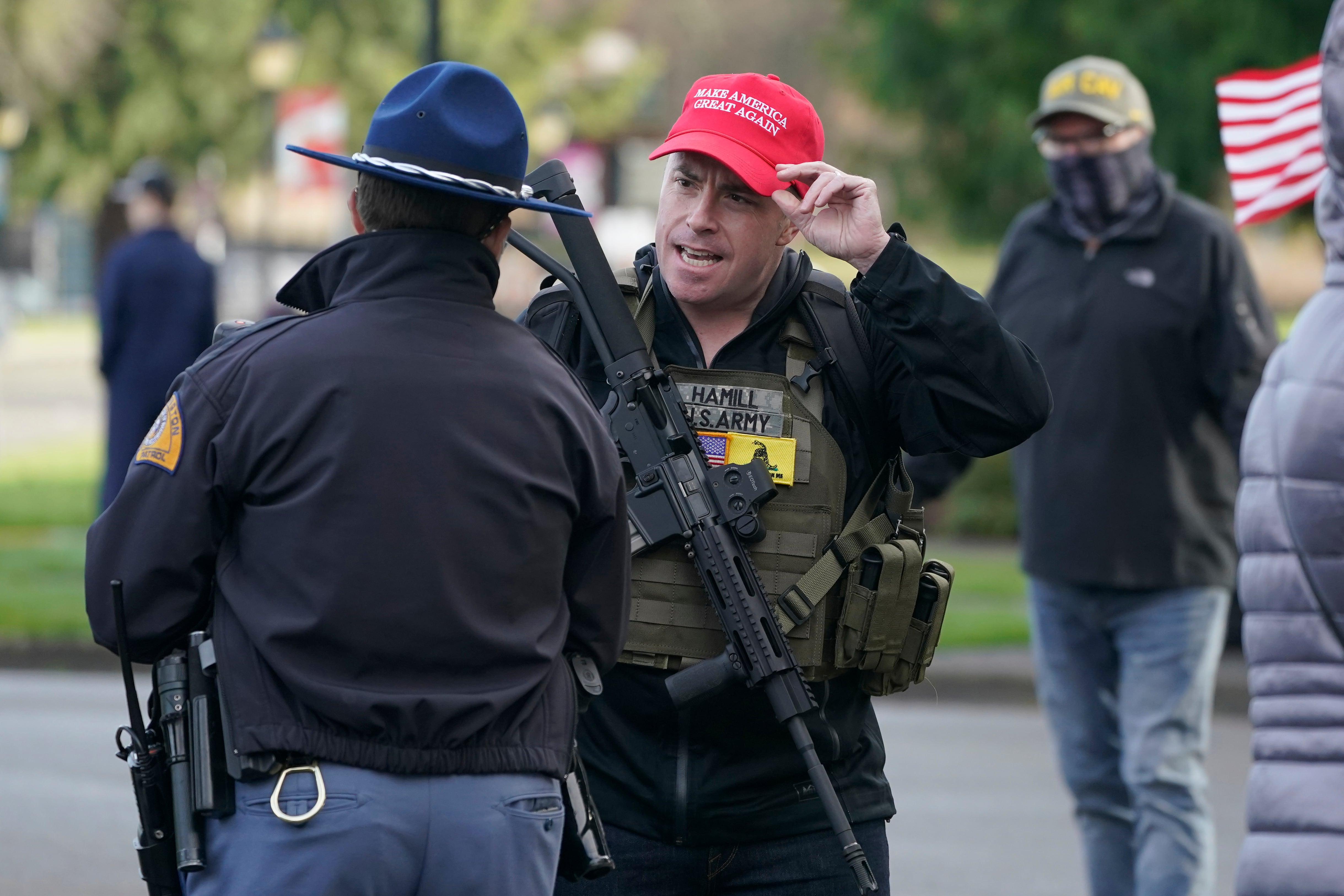Air Force pilots today are receiving about half the home-station training that new Chief of Staff Gen. David Goldfein said he received when he was a captain flying F-16s.
"On average I would go to three flag exercises a year, plus I would do a rotation with the National Training Center, with the Army, and that would be a normal battle rhythm," Goldfein said Wednesday during his ‘State of the Air Force’ briefing at the Pentagon with Secretary of the Air Force Deborah Lee James.
"Today’s pilot, based on the size of the force, the age of the force, and continuing op tempo demand in Central Command, is getting about half of that," he said. "We’re able to maintain a higher state of readiness forward, where the combat commanders need it, but the bill payer is home station."
Goldfein, who’s been in the top job for a month, said one of his first priorities is reducing the strain placed on airmen and allowing them more time to spend at home for both training and family.
In a public letter to airmen published on the Air Force website Tuesday, Goldfein wrote that "squadrons have been asked to bear the brunt of an incredible deployment tempo and manpower shortages which have had a direct impact on readiness in our warfighting missions."
"The resultant effect of these challenges is we have degraded the core fighting unit of our Air Force — the place where Airmen live, breathe and grow, where we generate combat capability, and where our culture resides: the squadron."
At the Pentagon Wednesday, Goldfein pointed to his own experience fighting in Desert Storm as a reason the training is so critical.
"That all played out for me personally on the first night of the first day of Desert Storm when I, along with all the rest of my fellow fighter pilots, got into combat for the first time," he said.
"Our leader at the time was a combat veteran from Vietnam, and he was the only one in the formation who had ever flown in combat. The rest of us were green and so we were a little uncertain about how we were going to perform," Goldfein said. "I remember him calling out, like it was a walk in the park, ‘Oh there’s Triple A, anti-aircraft fire,' and we all stared at it. He says, 'There’s a surface-to-air missile,' and we all just stared at it."
The night even involved Goldfein’s unit even watcheding an enemy MiG-29 get shot down that night.
"I saw an aircraft hit the dirt, and I thought, ‘Well, I have not seen that before,’ " he said.
"But here’s what I had seen," Goldfein added, stressing the importance of training. "Every radio call, every visual in the formation, everything I saw, I realized I’d seen it all before at Nellis [Air Force Base, Nevada]. This is just like Red Flag. At that moment, I can tell you the confidence that came over my cockpit and so many others, that says, ‘Okay, we can do this. We know how to do this,’ And we went in, and we destroyed the target."
The Air Force is working along several avenues to reduce the strain on airmen, particularly pilots and their support squadrons, and to get them more time at home station. These include boosting the the overall size of the force, eliminating burdensome extra duties, and boosting training squadrons.
In an interview with Air Force Times Aug. 3, James said the service is working on a review of 61 additional duties imposed on airmen that could be eliminated.
"The idea is to give back some of this precious time to airmen," James said. "I'm sure they all had a good reason for being when they were instituted. But the fact is, they have been increased and increased and increased to the point where, now, this is quite burdensome."
Some of that extra time could be put back into high-end combat training.
However, our success has come at a price. We were compelled to find operational efficiencies to balance our budgets, with manpower and conventional airpower accounts suffering most. Squadrons have been asked to bear the brunt of an incredible deployment tempo and manpower shortages which have had a direct impact on readiness in our warfighting missions. "In my experience, readiness and morale are inextricably linked," Goldfein wrote in his letter to airmen. "Walk the line at Bagram AB or Al Udeid AB, where units are fully manned and readiness is high, and you'll find morale is equally high. Visit one of our CONUS main operating bases and you'll often find manning hovering between 60-70 percent, with many key supervisors and leaders deployed or dual-hatted, remaining Airmen working overtime, and units managing parts and equipment shortages.
"On top of this, our squadron commanders, civilian leaders, superintendents, first sergeants, and Airmen feel first-hand the challenges associated with increased mandatory recurring training, a growing list of additional duties, and the challenge of a 'do-it-your-self ' world in place of Airmen who previously provided services for them."
In the weeks leading up to the Air Force Association's September convention, Goldfein wrote, he is looking forward to a "robust discussion" about how to revitalize squadrons.
The resultant effect of these challenges is we have degraded the core fighting unit of our Air Force. The place where Airmen live, breathe, and grow, where we generate combat capability, and where our culture resides ... the squadron.
Over the next several weeks leading up to our 69th birthday celebration and the AFA convention in September, I look forward to a robust discussion across the Air Force to sharpen this dialogue and fill in the "how" behind the "why."
Bottom line -- if we are going to sustain warfighting excellence and build the Air Force outlined in the SMP and AFFOC, it must begin in our squadrons. Therefore, revitalizing squadrons as the core fighting unit in our Air Force will be the primary focus in my first year as your Chief. I look forward to working closely with our Secretary, MAJCOM Commanders, and Air Force leadership team across our total force to get after this in the months ahead.
Cutting queep
One way the Air Force is hoping to reduce time demands on airmen is by eliminating burdensome extra duties. In an interview with Air Force Times Aug. 3, James said the service is working on a review of 61 additional duties imposed on airmen that could be eliminated.
"The idea is to give back some of this precious time to airmen," James said. "I'm sure they all had a good reason for being when they were instituted. But the fact is, they have been increased and increased and increased to the point where, now, this is quite burdensome."
Some of that extra time could be put back into high-end combat training.
"Our squadron commanders, civilian leaders, superintendents, first sergeants, and airmen feel first-hand the challenges associated with increased mandatory recurring training, a growing list of additional duties, and the challenge of a 'do-it-your-self' world in place of airmen who previously provided services for them," Goldfein wrote in his letter. "Bottom line: if we are going to sustain warfighting excellence and build the Air Force...it must begin in our squadrons. Therefore, revitalizing squadrons as the core fighting unit in our Air Force will be the primary focus in my first year as your Chief."
Lower your seat for stealth
Airmen who are still getting to know the new boss were also treated Wednesday to Goldfein describing some of his experience flying the F-117 Nighthawk stealth fighter.
"When I took off in the F-117, I actually had a switch, creatively named 'the stealth switch.' And when I pushed it, all my antennas stowed, all my radios turned off," Goldfein said. "The last thing I did before crossing the line was lower my seat to become a smaller target."
Yet the F-117 was a "platform centric" approach, the general said, that only focused on making that single plane as stealthy as possible. He also described the mission as "linear," since the stealth fighter would always be at the forefront of any operation, often times the first U.S. military asset into a theater.
By comparison, the F-35 Lightning II – which just reached its initial operating capability Aug. 2 – is a more advanced fighter that integrates with other aircraft better than the F-117, Goldfein said.
The F-35 is a network approach, focused on the fight as a whole, and it can be effective at any stage of combat, the general said.





